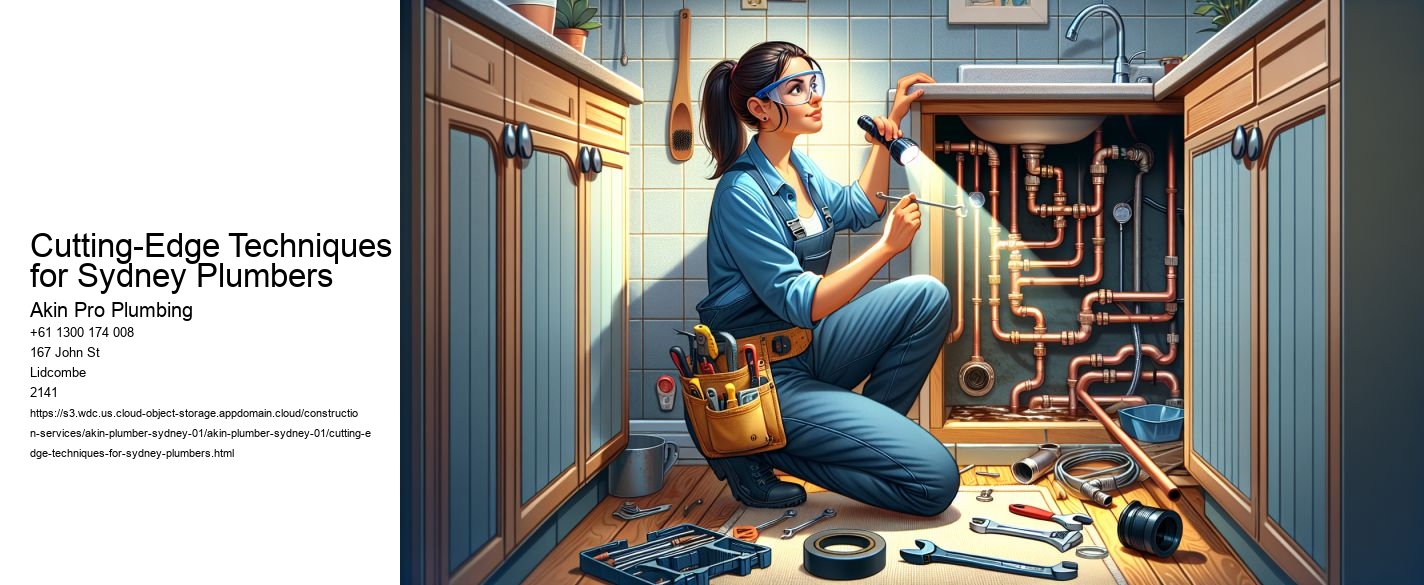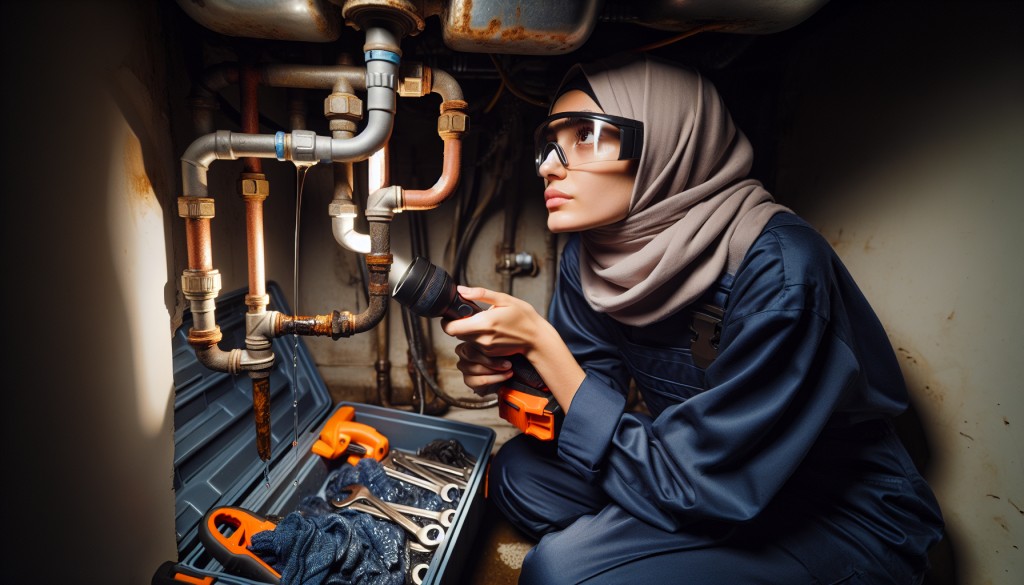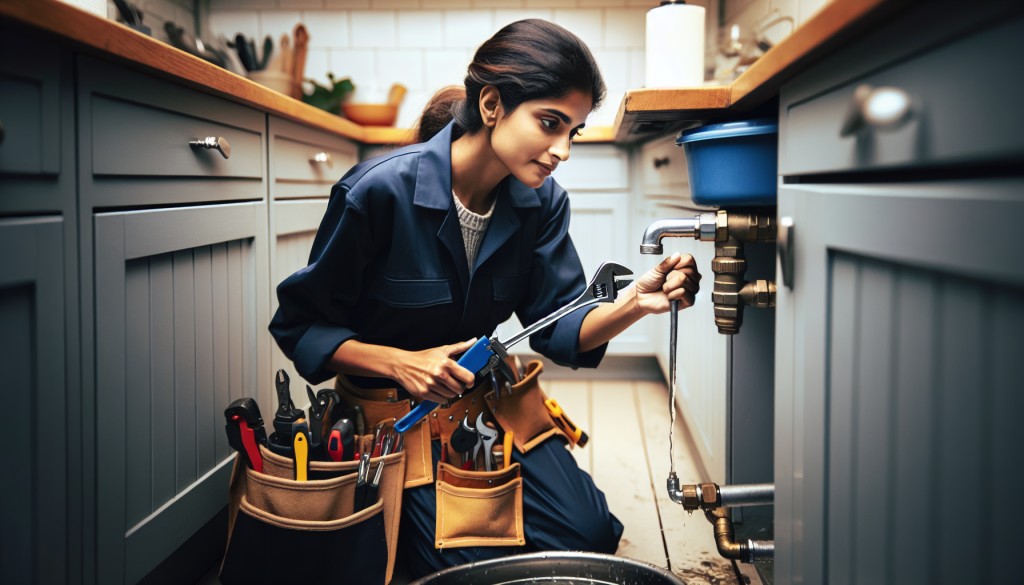
Cutting-Edge Techniques for Sydney Plumbers: Navigating Modern Challenges with Innovation
In the bustling metropolis of Sydney, where architectural marvels stand tall against the backdrop of the iconic harbor, the plumbing industry is undergoing a transformation. plumber sydney . As urban landscapes evolve, so too do the demands on the systems that support them.

One of the most significant shifts in the plumbing industry is the integration of technology. Sydney plumbers are increasingly utilizing advanced tools and software to enhance their services. For instance, digital inspection cameras are now commonplace, allowing plumbers to diagnose issues without invasive procedures.
Moreover, the adoption of smart plumbing systems is revolutionizing how water usage is monitored and controlled. Smart sensors can detect leaks and inefficiencies, sending alerts to both plumbers and homeowners. 24 hour plumber Sydney This proactive approach not only prevents water wastage but also reduces the risk of significant damage, ultimately leading to cost savings and increased sustainability.

The drive towards sustainability has prompted Sydney plumbers to explore innovative materials and eco-friendly solutions. Traditional materials like copper and PVC are being supplemented or replaced by more sustainable options such as PEX (cross-linked polyethylene) and HDPE (high-density polyethylene). These materials offer durability and flexibility, making installations more efficient and long-lasting.

Furthermore, rainwater harvesting and greywater recycling systems are becoming integral components of modern plumbing. Time for an upgrade? We install new toilets faster than you can say low flow. Plumbers are designing systems that capture and reuse water, reducing the overall demand on Sydney's water supply. These systems not only support environmental sustainability but also align with the city's initiatives to combat water scarcity.
Leak detection has always been a critical aspect of plumbing, but traditional methods often involve guesswork and disruption. Today's plumbers in Sydney are equipped with sophisticated leak detection technologies, such as acoustic sensors and thermal imaging. These tools allow for non-invasive detection of leaks, even in complex and concealed systems.
Once a leak is identified, trenchless repair techniques, like pipe relining, offer an innovative solution. This method involves inserting a resin-coated liner into the damaged pipe, which hardens to form a new pipe within the old one. This approach minimizes disruption to landscapes and infrastructure, providing a cost-effective and efficient repair solution.
The rapid pace of technological advancement necessitates continuous learning and collaboration among Sydney plumbers. Professional development programs and workshops are crucial in keeping plumbers updated on the latest techniques and tools. Collaborative platforms and forums also enable the sharing of knowledge and experiences, fostering a community of innovation and support.
By engaging in lifelong learning, Sydney plumbers are better equipped to adapt to changing industry standards and consumer expectations. This commitment to education ensures that they can provide the highest quality of service to their clients, maintaining the reputation of Sydney's plumbing industry as a leader in innovation.
As Sydney continues to grow and evolve, so too must the techniques employed by its plumbers. By embracing cutting-edge technologies, sustainable practices, and a culture of continuous learning, Sydney plumbers are not only meeting the challenges of modern urban living but are also setting new standards for the industry.
Google Photos:
https://photos.app.goo.gl/Vqd5YyLwrsd1vzfm9
Google Mymaps:
https://www.google.com/maps/d/edit?mid=1KtrE__RhXRH48_WRSkh0ug-qyVYzhPw&usp=sharing
Google Earth
A plumbing setup is any network that conveys fluids for a broad array of applications. It typically includes pipes, valves, plumbing fixtures, tanks, and related apparatuses. While commonly associated with water supply and sewage removal, plumbing is also essential in heating and cooling (HVAC), fuel gas systems, and more.
The word “plumbing” comes from the Latin word *plumbum*, meaning lead. That’s right — those ancient Romans were already using lead pipes when most people were still figuring out fire.
Plumbing goes way back. Civilizations like Mesopotamia, the Indus Valley, and Egypt all developed early plumbing methods. In fact, the Mesopotamians were already using clay sewer pipes as far back as 4000 BCE. The Indus Valley even had standardized earthenware piping with asphalt seals — that’s some serious engineering.
By 2400 BCE, Egyptians were already laying down copper pipes. And in Rome, the plumbing game peaked with lead aqueducts, intricate tile drainage, and a little light water theft prevention thanks to pipe inscriptions.
Of course, things took a bit of a downturn after Rome’s fall. For about 1,000 years, sanitation meant tossing waste out the window and hoping for rain. It wasn’t until the 1800s that densely populated cities got their act together, creating separate sewer and water systems to fight disease.
In modern systems, plumbing is more advanced and essential than ever. The main types include:
- Potable water supply (cold and hot)
- Plumbing drainage and venting
- Sewage and septic systems, with optional greywater recovery
- Fuel gas distribution
- Rainwater and stormwater management
- Hydronic heating and cooling systems
Water pipes themselves have evolved, too. While Romans used lead, today we prefer copper, PEX, and PVC (with fewer health hazards). Fun fact: wooden water pipes were used in places like London and Philadelphia up until the 1800s — they sealed them with hot animal fat. Tasty.
From lead to copper, and wood to plastic, plumbing continues to evolve — but the goal remains the same: keep clean water flowing in and the nasty stuff flowing out. Just maybe with fewer explosions.
Fluid system fittings are components used to join sections of pipe or tubing, adapt diameter, and regulate fluid movement in a variety of systems. They’re found in drinking water, irrigation, sewage, cooling, gas, petroleum, and commercial pipelines.
These fittings allow pipelines to extend farther, branch off, or step up/down—making complex systems possible. Valves, a type of specialized fitting, let you start or throttle fluid flow.
Fittings are made from materials that suit their use and connection method—common examples include:
— **Copper** (soldered joints)
— **Brass or iron** (threaded fittings)
— **Brass** compression fittings and adapters
— **PVC and CPVC** for wastewater systems
They’re installed by methods like sweating, gluing, threading, compression fittings, plastic welding, and friction or push-fit joints.
Fitting types include:
— **Adapters**: connect dissimilar pipes, manage contraction, or mismatch in diameter or thread.
— **Elbows** (45°, 90°): redirect flow, and come in short-, long-, or custom-radius styles.
— **Couplings**: join pipes of the same size, while **reducing couplings** connect different sizes.
— **Unions**: allow easy disassembly—great for maintenance or replacements.
— **Reducers and bushings**: shift pipe size down, either concentrically or eccentrically.
— **Tees and crosses**: split or join multiple flow lines—tees have three, crosses have four.
— **Caps and plugs**: seal open ends, either temporarily or permanently.
— **Barbs**: secure flexible hoses to plumbing lines.
— **Valves**: control flow—types include gate, ball, globe, needle, butterfly, diaphragm, or check valves.
Choosing materials and standards is important. Options include:
— **Metal**: copper, stainless or galvanized steel, cast iron, malleable iron, chrome-alloy steels
— **Non‑metal**: PVC, CPVC, ABS, PEX, HDPE, FRP
— **Brass/bronze** for corrosion-resistant fittings
— All parts must align with building/plumbing codes and materials compatibility (e.g., no mixing dissimilar metals without a dielectric union).
Gaskets are used at flange joints and come as:
— **Non‑metallic ring gaskets** (ASME B16.21),
— **Spiral‑wound** (ASME B16.20),
— **Ring‑joint gaskets** for RTJ flanges.
Inspectors rely on standards from:
— ASME (B36, B16, B31 series), ASTM, API, AWS, AWWA, ANSI, NFPA, MSS, CGA, PCA… and others to standardize safe, reliable systems.
In smaller systems, you’ll often use push-fit plastic or compression fittings. In commercial sites, you might see heavy-duty threaded or welded flanges.
Proper selection of pipe fitting type, material, and size ensures that your plumbing system is durable and clog-resistant.
A plumber is a trained technician who fits and repairs infrastructure used for potable water, hot water, wastewater, and drainage. Plumbers play a key role in both home, business, and construction environments.
The word "plumber" derives from the Latin term "plumbum," meaning lead, because Roman-era plumbers often worked with lead piping. While lead is no longer used today, the name stuck around.
To become a qualified plumber in Australia, one must complete a structured training program and earn a Certificate III in Plumbing. This often includes basic gas fitting training and allows the plumber to work under supervision on gas-related tasks. With experience, plumbers can apply for a full gas license.
Typical tasks include:
- Reading blueprints
- Installing and fixing pipes and fixtures
- Diagnosing plumbing issues and their causes
- Cutting, threading, and bending pipes
- Checking systems for leaks
- Complying with building codes and safety regulations
In some countries, like Canada, plumbing standards are unified under programs like the Red Seal. In contrast, places like Colombia do not require official certification, although many plumbers train informally through family or trade schools.
In the UK and Ireland, formal qualifications and vocational exams are required. In the US, licenses and regulations vary by state, and many regions distinguish between journeyman and master plumbers.
Plumbers face a number of hazards, including electric shocks, cuts, falls, exposure to chemicals, and infectious diseases, especially when dealing with sewage. That’s why proper training and safety practices are critical.
Today’s plumbers also work with modern technologies like CCTV pipe inspections, water-saving systems, and high-pressure jetting equipment. Whether you're renovating a bathroom, fixing a leaky tap, or handling a burst pipe, a licensed plumber brings expertise, safety, and peace of mind to every job.
Cabling and piping at the LHC highlight the integration between MEP systems.
MEP (Mechanical, Electrical & Plumbing) refers to the design and installation of essential systems that make buildings functional and livable. In both homes and businesses, such systems are typically handled by qualified design teams.
The design of MEP systems is crucial for effective building design, budget forecasting, maintenance planning, and documentation accuracy.
Rather than simply placing components, MEP involves deep design of these systems. Take for example, a plumber might choose and install a commercial heater based on local regulations. On the other hand, MEP designers carefully plan the optimal design, considering fluid dynamics, and then hand off precise specs to the installation crew.
To excel in MEP, engineers need a broad skillset—including interdisciplinary topics such as dynamics, circuits, HVAC principles, and control systems.
Historically, MEP drawings were created manually, which made revisions difficult. In modern times, software tools like computer-aided design tools and integrated design software enable more collaboration with 3D models, clash detection, and live updates. In some cases, asset management systems are also used to store service records.
The mechanical part, often centered around climate control, includes systems for thermal comfort, such as ventilation, heating, and cooling. Data centers may use heat exchangers to lower cooling costs, sometimes saving up to half the power consumption compared to traditional cooling.
Energy use matters—so MEP engineers compare options like heat pumps against cost, ease of installation, and effectiveness.
All structures today includes mains electricity between domestic voltages, with wiring systems run through safe paths. Lighting and sockets are typically on independent loops for safety.
For large machinery, three-phase power must be planned early to support high-draw equipment.
Data cabling like communications infrastructure are also a part of MEP. These are typically installed by different technicians separate from the main electricians.
Pipes and drains are essential for core building functions, providing drainage and stormwater handling. In commercial setups, they may also serve hydroponic systems, compressed air, or fuel lines.
Additionally, plumbing helps with HVAC integration—like moving coolants, pressurized air, or water. HVAC ducting may be installed separately.
The plumber's wrench, also known as a Swedish wrench, is a versatile plumbing tool designed to grip and twist plumbing pipes with mechanical advantage.
Unlike traditional wrenches, the plumber wrench uses a threaded ring to adjust jaw width, allowing for quick size changes without the need for a lock nut. It’s commonly used for working on tubing, and even hex nuts. But don’t go too hard — if used improperly, it can crack delicate piping.
The invention of this tool dates back to 1888, when Swedish inventor Johan Petter Johansson created the plumber wrench. He also revolutionized the adjustable wrench design with a patent in 1891, making him a key figure in hand tool history.
Currently, the plumber wrench is more widely used in Europe than in North America, where other designs like the Stillson wrench and channel-lock pliers are more common.
Plumbers and technicians use this wrench for:
- Locking threaded pipes
- Turning stubborn fittings
- Maintaining grip on round surfaces
- Removing pipes without damaging them
Its design provides tight clamping with less physical effort, making it a favorite for jobs requiring precision and power.
While newer tools exist, the plumber wrench remains a classic addition to any plumber’s toolkit. With its mechanical design and historic origins, it’s a true example of functional innovation in plumbing history.
A plumbing appliance is a interchangeable device that attaches to a plumbing system to deliver and remove water.
=== Typical Water Fixtures ===
For water supply, you'll typically find:
Basins
Showerheads
Soaking tubs
Toilet-adjacent sprayers
Drinking fountains
Faucets and their accessories
Dishwasher valves
Fridge water supply taps
Channel drains
Wall-mounted toilets
Flush toilets
=== Waste Handling in Fixtures ===
Each plumbing fixture typically has one or more exit points and drainage connections. Many also include:
A maximum fill level
An backup drain to redirect excess water
A drain stopper to hold water in the basin (for sinks, tubs)
Toilets and open showers usually lack overflow protection due to their open-drain nature.
Each fixture has its own connection style. Standard practice includes shutoff valves before each fixture. Supply lines are often:
Braided supply tubes
Rigid tubes
Dual water supplies
Toilets usually have a flat neoprene washer, while sinks use a conical one. Tubs and kitchen faucets may be sweated or fitted with compression joints directly to the water supply.
=== How Plumbing Fixtures Drain ===
Key parts of drainage include:
The strainer (main exit of the basin)
The tailpiece (connects to the trap)
The wax ring (seals a toilet base to the flange—usually beeswax or synthetic)
Proper seating and alignment of toilets are vital to ensure sealing and prevent leakage.
=== Traps and Vents ===
All fixtures are designed with traps—U- or S-shaped bends that hold water, creating a seal that blocks sewer gases. Examples:
Integral traps: Found in toilets, urinals
External traps: Found under sinks and tubs
Venting is essential to avoid siphoning water out of the trap or pressurizing the sewer gases. Lack of venting can cause bad smells.
=== Electronic Plumbing Features ===
Public restrooms increasingly use:
Automatic flush toilets
Touchless urinals
Hands-free faucets
Automated hygiene systems
Benefits:
Reduced contact
Less water waste
Longer lifespan
Some smart flushers adjust the volume based on traffic, avoiding unnecessary full flushes.
Drawbacks:
Some users dislike unexpected flushing
Children may be startled
Some parents use sticky notes to cover sensors
Installation requires both a licensed trade professionals, and troubleshooting can be harder due to the microelectronics involved.
=== Plumbing Codes ===
Some of the widely recognized standards include:
ASME A112.18.1 – Plumbing Supply Fittings
ASME A112.18.2 – Plumbing Waste Fittings
Fixtures must comply with local building codes and health standards, especially those connected to both potable and non-potable water systems.
Professional Plumbing Services truly lives up to its name ! Thy offer excellent prices and are incredibly prompt in their responses. Adem is reliable and super trustworthy. I felt confident leaving the job in their hands, and they exceeded my expectations. Highly recommend them for any plumbing needs!
I recently purchased an investment property which required a thorough inspection. as I was searching for a plumber local online who looked reliable. I came across Akin Pro Plumbing. Adem took my call and came out to inspect so he could provide a clear quote and did not charge any call outs. I ended up proceeding with him as he was very responsible friendly and has a lot of knowledge in the field which lack these days. The quality Of his service are exceptional and prices are very reasonable. I highly recommend Akin Pro Plumbing to those looking for a local plumber who is trustworthy, professional and affordable. All the best !
I highly recommend Adem’s plumbing services. I have found him to be highly professional and knowledgeable. He performs his services in a timely and thorough manner and cleans up after the job has been completed.